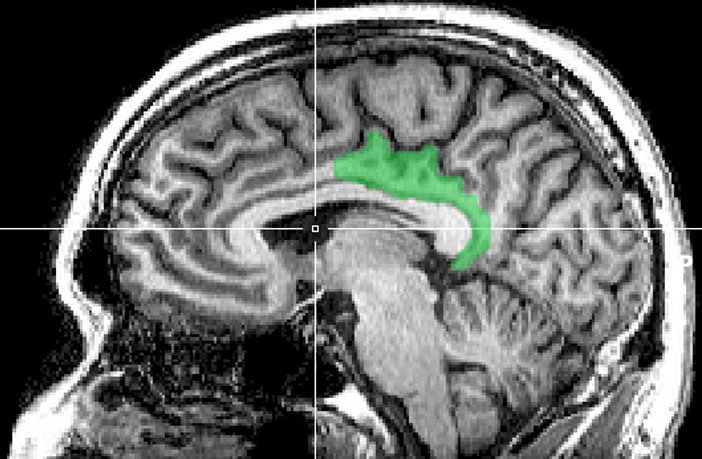Viewing green space in urban landscapes elicits substantial activity in key areas of the brain related to attention and stress regulation, according to new research published in the journal NeuroImage. The findings shed new light on the relationship between green urban landscapes and mental health.
“In the past decade, there has been a lot of research across varying disciplines that has converged to indicate that nature-containing environments such as those carrying an abundance of trees or foliage can enhance mental well-being,” said study authors Tatia Lee, Chris Webster, Dorita Chang, and Bin Jiang of The University of Hong Kong in a joint statement to PsyPost.
“For example, individuals exposed to green environments report lower levels of stress than those in less-green settings. In this work, we were interested in asking just how green environments engage the human brain, and how stress-regulatory benefits come about from exposure to these environments. It is one thing to show that all these environments are good for us — but it is just as important to understand why!”
For their study, the researchers used functional magnetic resonance imaging (fMRI) to examine the brain activity of 44 participants as they viewed images of neighborhood streets that varied in green-space density. Within two-weeks of their brain scan, the participants returned to the laboratory to provide self-reported stress and preference ratings of the images.
The team of scientists observed systematic differences in brain responses based on the green-space density of the urban images, and these differences were correlated to stress and preference ratings.
“It turns out environments (in our case, urban landscapes) with varying degrees of green-cover, activate a primitive part of the brain – the posterior cingulate. This region is particularly intriguing as it is a part of a larger (limbic) system that is known for its role in serving motivation- and emotion-related responses, but also has extensive connections to executive (e.g., decision-making) and attentional nodes in the brain,” the researchers explained.
“When we varied the green-content contained in our scenes, we saw corresponding changes in the activity of this same region that was surprisingly well-matched to the subjects’ own reported stress-ratings after viewing these same images. It appears then, that the cingulate is a key area that serves our (human) sensitivity to green-spaces, and acts as an early driver that ultimately interfaces with stress regulatory responses in the neuroendocrine system.”

The new findings and similar research indicate that “green space exposure is physiologically important to your health,” the authors of the study added.
“We know this from statistical studies of population health. Now we know more about it via brain activity analysis. Be sure to take a regular dose of greenery as well as of walking. Walk the greener route, even if it’s longer, or particularly if it’s longer! Consider paying that bit extra on rent for the greener outlook.”
The State Key Laboratory of Brain and Cognitive Sciences at the University of Hong Kong collaborated with the university’s Faculty of Architecture to conduct the current study.
“All professions need to establish evidence-based justifications for their interventions. Only relatively recently have data sources been big enough and accurate enough to start to discover the efficacy of urban green spaces in moderating stress, reducing obesity and so on. Understanding these relationships measured within population-health studies is one thing. Understanding why and how they work physiologically and psychologically is a step further,” the researchers told PsyPost.
“Such knowledge will help not only in designing more beneficial and therapeutic green-infrastructure systems for healthy cities of the future, but also feeds into the Faculty of Architecture’s research on VR-AR-IM technologies for providing green-therapy for people without access to outdoor green experience (severely disabled, hospitals, factories, prisons).”
“Planning our environment to promote mental well-being is of utmost importance because of the increasing prevalence of stress-induced mood problems associated with urban living.”
But the new research includes some caveats.
“We started simple here, by altering the density of green-cover and checking how this affects the brain. But one of the key things that we can draw from past research is that natural scenes vary in other characteristics as well — for example, in their characteristic ‘second order’ structure defined by edges and lines,” the researchers explained.
“One good question moving forward is whether beyond greenness, deviations of such properties may also lead to variances in stress-responses. It is easy to imagine how such work would have important implications for city/architectural-planning.”
Future research could examine what particular features of natural environments are associated with mental health benefits.
“We suspect that there is a relationship between the structure of green spaces and brain/mood/health responses, just as there may be in music. ‘Mozart effect’ experiments initially proposed that the complexity of Mozart was the reason for (temporarily) enhanced cognitive effects in young adults in solving spatial puzzles. The result has recently been generalized to ‘whatever music you have a preference for,'” the researchers said.
“The current understanding is that music stimulates the brain for clearer 3D and other complex forms of problem solving. So: is it the structure of the green (shapes of trees, variegation of texture and shade) or the prior-preference that induce the cognitive (and stress-moderating) effects?”
The study, “The human posterior cingulate and the stress-response benefits of viewing green urban landscapes“, was authored by Dorita H.F. Chang, Bin Jiang, Nicole H. L. Wong, Jing Jun Wong, Chris Webster, and Tatia M.C. Lee.
(Image by Stephen Dumas from Pixabay)
"between" - Google News
November 30, 2020 at 06:30AM
https://ift.tt/39x4lX3
Neuroimaging study provides new details on the link between stress reduction and green urban landscapes - PsyPost
"between" - Google News
https://ift.tt/2WkNqP8
https://ift.tt/2WkjZfX
Bagikan Berita Ini















0 Response to "Neuroimaging study provides new details on the link between stress reduction and green urban landscapes - PsyPost"
Post a Comment